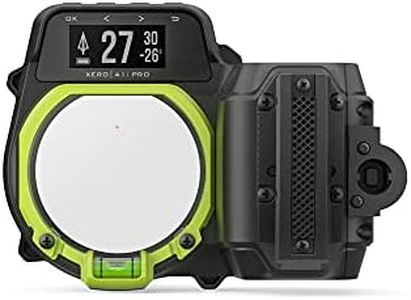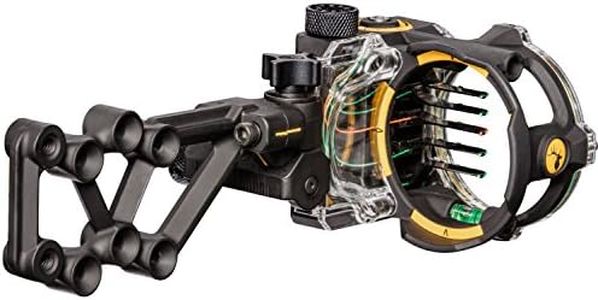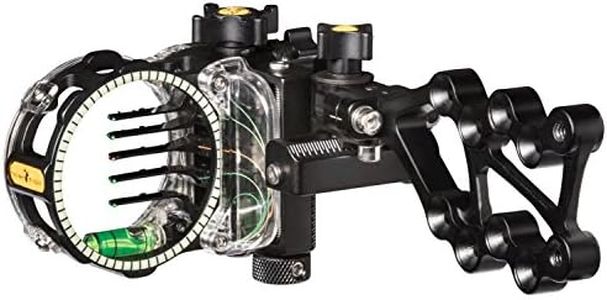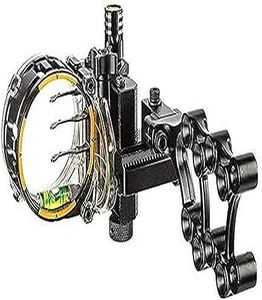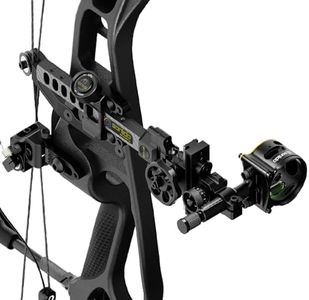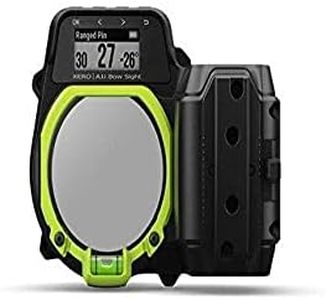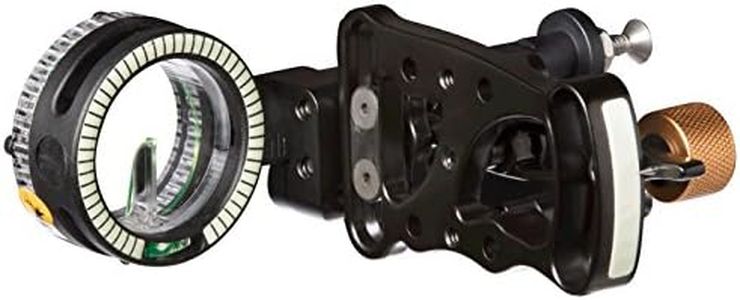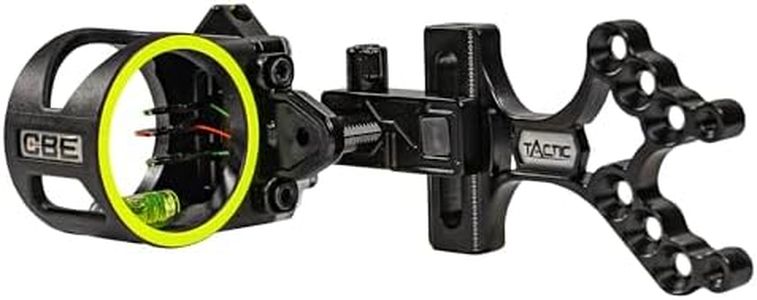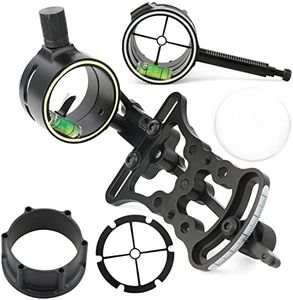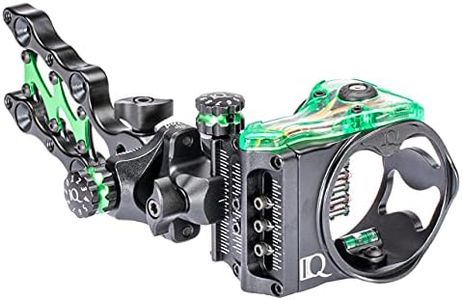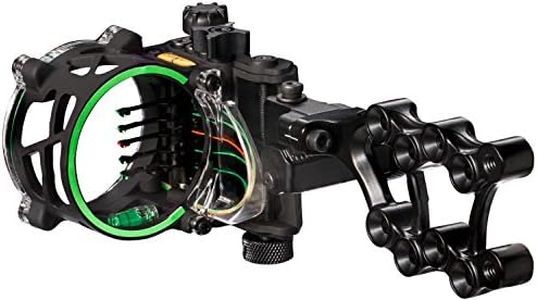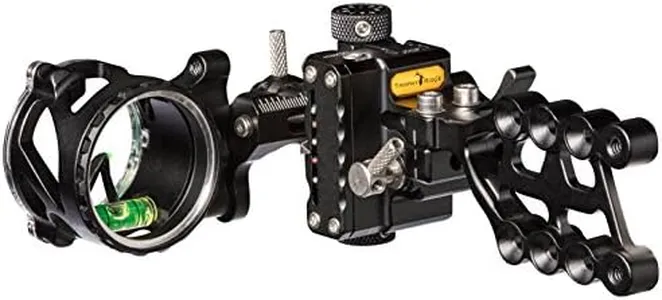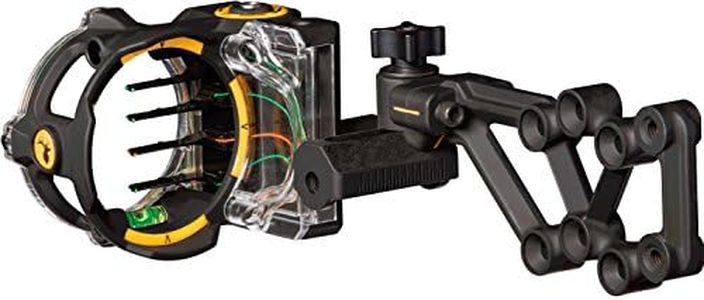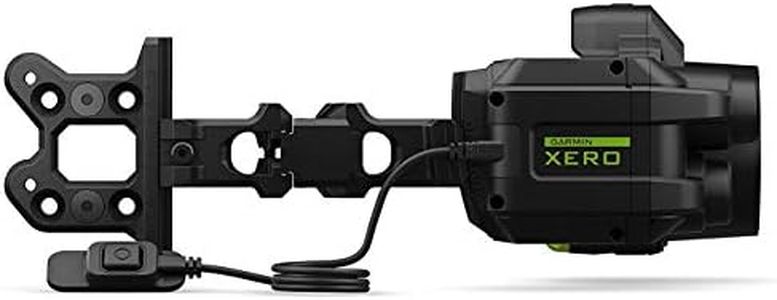We Use CookiesWe use cookies to enhance the security, performance,
functionality and for analytical and promotional activities. By continuing to browse this site you
are agreeing to our privacy policy
10 Best Bow Sights
From leading brands and best sellers available on the web.Buying Guide for the Best Bow Sights
Choosing the right bow sight can make a real difference in your accuracy and enjoyment whether you’re into target archery or hunting. Finding the best fit is about matching your shooting style, level of experience, and personal preferences with the features and design of the bow sight. Before buying, always think about how and where you plan to use your bow sight—such as in open fields, dense woods, or at an indoor range. Trying out a few can help you see what feels intuitive and comfortable. Read user reviews to see how certain sights work in real-world scenarios similar to yours.Number of PinsThe number of pins on a bow sight refers to how many aiming reference points you have while shooting. This is important because each pin is usually set for a certain distance, letting you quickly judge yardage without adjusting on the fly. Sights come with a single pin, multiple fixed pins (commonly three to seven), or adjustable pins. Fewer pins can be less confusing and make for a cleaner sight picture, ideal for beginners or close-range shooting. More pins help cover a range of distances but can get crowded and confusing if you shoot in low light or dense environments. Think about the typical range at which you'll be shooting, and choose an arrangement that matches your needs—single pins for simplicity and precision, multiple pins for quick target acquisition at varying distances.
AdjustabilityAdjustability refers to how much you can tweak or move parts of the sight—like pin elevation or windage—to fit your shot. Some sights are fixed, while others allow you to move pins with precise knobs or sliders. Greater adjustability is important if you want accuracy at different distances or if you constantly tweak your setup. Simpler, fixed sights are sturdy and easy for beginners. More advanced shooters or hunters who face varying shot distances should look for more finely adjustable sights, as these allow for precise shooting in changing conditions.
Sight Material and ConstructionThe material and build quality of a bow sight affect its weight, durability, and resilience to impact. Aluminum sights are popular because they balance lightness and durability. Plastic or composite sights can be lighter and less expensive but may not handle rough use as well. If you shoot in demanding environments or need something that stands up to regular outdoor use, look for all-metal construction. Indoor or occasional shooters may get by with lighter, simpler materials.
Fiber Optics and VisibilityFiber optics are thin, light-gathering strands often used in bow sights to make the pins bright and easy to see, especially in low light. The length and quality of fiber optic cable can affect how visible your pins are. If you shoot in dim conditions, seek out sights with more or higher-quality fiber optics for brighter pins. For mostly daytime or target shooting, you might not need as much brightness. Some sights also offer built-in lights—consider your local legal regulations if hunting.
Mounting TypeBow sights come with different mounting options, like fixed or dovetail mounts, affecting how you attach them to your bow and how much adjustment you have. Fixed mounts are straightforward and hold tight, good for beginners or those who value simplicity. Dovetail and quick-detach mounts allow for more adjustment or easier removal, which can be helpful if you change sights often or need to pack your bow for travel. Consider how often you plan to swap gear or make major changes when picking a mounting type.
